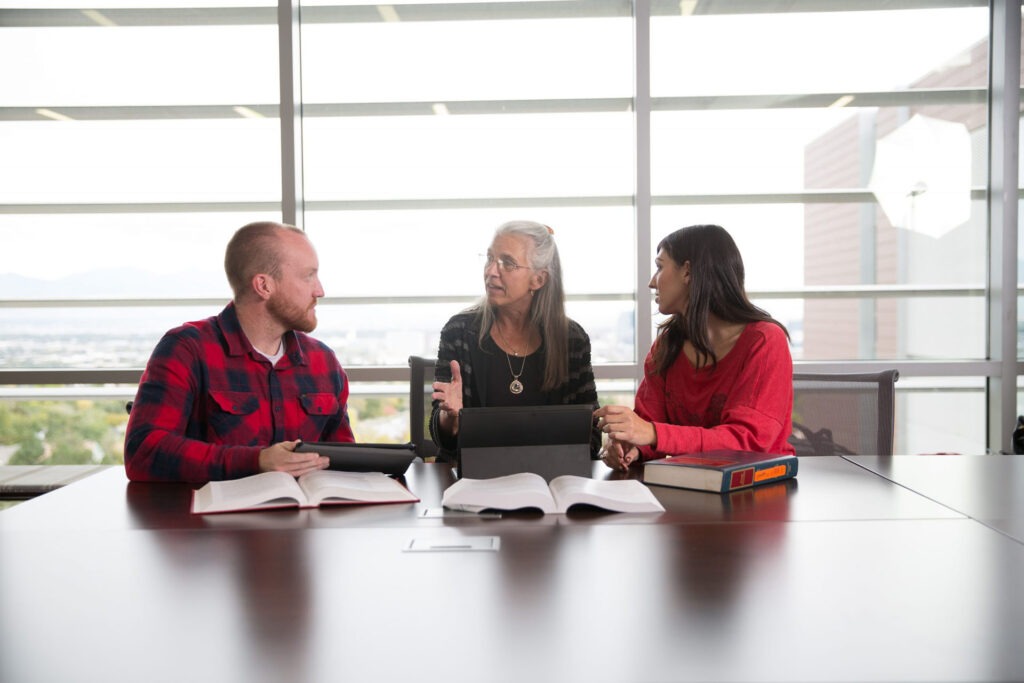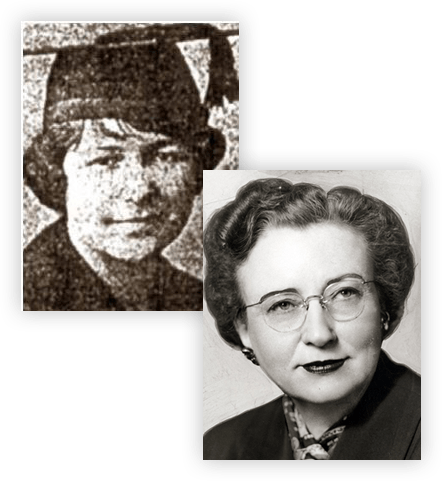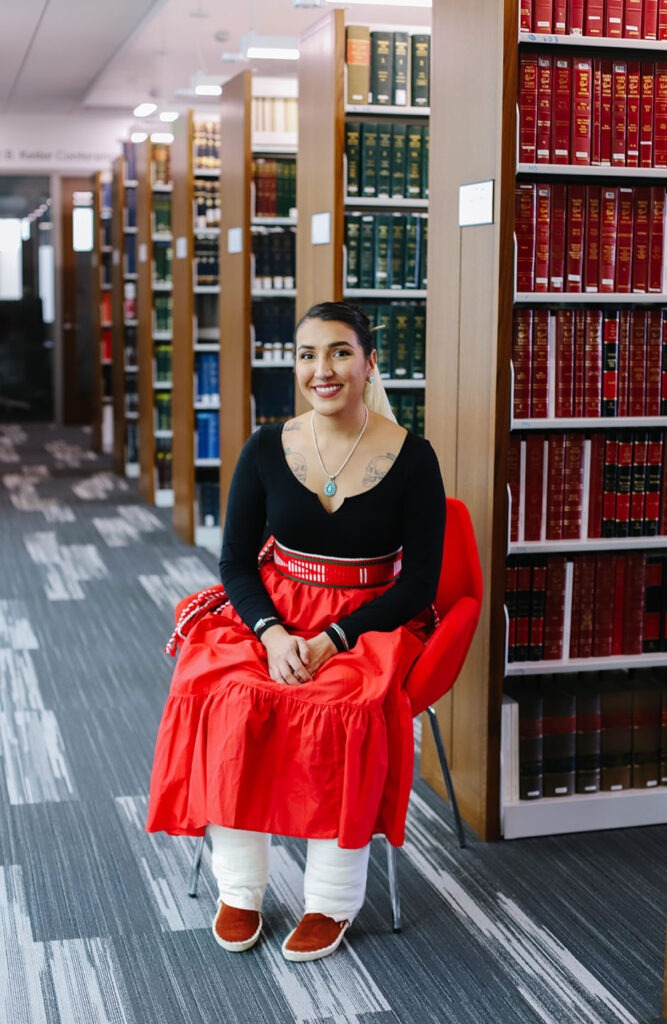An in-depth look at how women lead Utah Law forward—now, in decades past, and in years to come.
By Elaine Jarvik.
The year Judith Boulden graduated from law school at the University of Utah, the number of women receiving degrees reached an all-time high: 6.
Things were looking up for women. The college had recently hired its first full-time female professor. Yes, there was the male occasional professor who complained that women were taking spaces that should rightfully go to men, especially since some of those men were returning from the war in Vietnam. Boulden remembers one professor, perhaps dismissive or maybe just unnerved, who wouldn’t call on women in class.
But by the time she graduated in 1974, Congress had passed Title IX legislation that barred schools from federal funding if they discriminated on the basis of sex. More women began applying to the U.’s College of Law, and more were admitted. The number of women in the class of 1976 jumped to 16.
Boulden went on to become the first female judge in the U.S. Bankruptcy Court’s District of Utah. And the S.J. Quinney College of Law went on to reach new milestones of gender parity unimaginable even in the heyday of second-wave feminism. Today, women comprise a majority of the college’s student body. Nearly half of the full-time law faculty are women. And for the for the first time in its 108-year history, the college’s dean is a woman.
****
On a morning this fall, Professor Leslie Francis stood in front of her health law students—some of them in person, some on Zoom—lecturing about the intricacies of the Employee Retirement Income Security Act, including how the federal Affordable Care Act trumps the decision of some states under ERISA to eliminate coverage for “drive-by deliveries.”
“I had a ‘drive-by delivery’,” Francis noted in an aside, explaining that her baby’s birth was so quick she didn’t need to be admitted for a hospital stay. By then she also had two other children, their births timed for the summer, when school was out.
This is quintessential Francis, who is indefatigable and efficient, a multi-tasker who is a professor of both law and philosophy, holds adjunct appointments in the University of Utah School of Medicine’s Division of Public Health and Division of Medical Ethics, and is director of the College of Law’s Center for Law and Biomedical Sciences.
 Francis has been witness to sweeping changes for women over the past five decades, starting with the number of women on law school faculties (none when she briefly attended the University of Michigan, one when she started law school again, at the U., in 1978). After graduating in 1981 and joining the law school faculty, she remembers attending a luncheon where she asked the U.’s president whether there were any plans to provide day care for faculty members. The answer: “an absolute ‘No.’” The assumption: Most faculty were men, and their wives would be home tending the children.
Francis has been witness to sweeping changes for women over the past five decades, starting with the number of women on law school faculties (none when she briefly attended the University of Michigan, one when she started law school again, at the U., in 1978). After graduating in 1981 and joining the law school faculty, she remembers attending a luncheon where she asked the U.’s president whether there were any plans to provide day care for faculty members. The answer: “an absolute ‘No.’” The assumption: Most faculty were men, and their wives would be home tending the children.
Even when there were finally three female full-time faculty at the College of Law, the number was hardly a critical mass to make changes happen, notes Debora Threedy, who joined the faculty in 1986 and is now professor emerita. She remembers being hesitant, early on, about speaking up in faculty meetings, especially about anything related to gender.
There was a faculty meeting, she remembers, where she had “the temerity” to suggest that the school needed to look carefully at student evaluation forms, whose questions and comments sometimes reflected gendered assumptions. “For example, what I wore was always dissected.”
Her favorite not-favorite evaluation was that her laugh was “inappropriate” for a law school class; instead, she “should develop a refined giggle.” Threedy was saddened, she says, by the reaction when she brought up such issues. What her male colleagues heard, she says, was ‘”You’re sexist,” when what she wanted them to understand was that the system itself wasn’t working.

****
The first woman admitted to the University of Utah law school was Rebecca Garelick, in 1921. But for the next half century, there were only one or two women admitted a year.
“We women were oddities, but at no time was anyone hostile,” remembers Pam Greenwood, who graduated in 1972 and later became the first woman appointed to the Utah Court of Appeals. Sometimes the women were teased; but the male and female students “were all in the same boat, trying to get the work done, trying to pass the tests,” the way Judith Boulden remembers it. “We were all trying to survive.”
In those days, after graduation, there would then be the daunting task of finding a job in a profession dominated by men — and, once hired, proving that women should be taken seriously.
“In my day we had to be better, work harder and put in more time,” says Margo Piscevich, the only woman in the College of Law’s Class of 1971. After moving back home to Nevada, she eventually became a successful trial lawyer and was the first woman president of the Nevada Bar Association. Still, she would often be mistaken for a secretary or court reporter. To look more “professional” in the beginning, she hid her long hair under a short wig.
“We were all struggling to find a persona,” remembers Judith Boulden about the days when there were few women lawyers and no mentorship programs. She had grown up around truck drivers and didn’t know any women lawyers to emulate. “Am I one of the boys? Should I cuss? . . .You don’t know what you’re supposed to look like and how you’re supposed to act.”
Government work was easier to come by and could be a stepping stone to jobs at established firms. After Denise Dragoo graduated in 1976, she joined Gov. Scott Matheson’s Utah Energy Office, where she helped draft the Utah Coal Mining and Reclamation Act. Later she joined Snell and Wilmer, specializing in mining and public land law, and became one of Utah’s first female law partners. In 2016 she was named the S.J. Quinney College of Law Alumna of the Year.
These days, slightly more than a third of all lawyers in the United States, and more than half of all law students, are women.
But earlier this year, the American Bar Association’s Commission on Women in the Profession issued a discouraging report: “In Their Own Words: Experienced Women Lawyers Explain Why They are Leaving their Law Firms and the Profession.”
The reasons cited: unequal pay, bullying, a “hypercompetitive culture,” a lack of women in law firm leadership, and a lack of flexible schedules, combined with long hours. Some women noted that while assertiveness is often required to succeed, they are sometimes criticized for not being “ladylike.”
The survey was a follow-up to a 2018 report from the ABA revealing that while women begin their careers as associates in big and medium-sized law firms at rates similar to men, the percentage of women who had reached partner status in 2018 was just 22.7 percent (19 percent for equity partner). And although median incomes for men and women earlier in their careers is relatively equal — women associates earn 91 percent of men’s salaries — by mid-career that percentage drops to 78, according to U.S. Census Bureau figures from 2018.
The disparity often comes down to the fact that in most firms, pay is based on billable hours—and amassing a hefty number of billable hours requires putting in overtime that working mothers choose instead to spend with their families. There is also pressure to network to get new clients, notes Vicki Baldwin, who graduated from the College of Law in 1999. Networking can involve dinners, drinks and golf games that male clients aren’t eager to share with a woman lawyer, “at least in Utah,” says Baldwin.
It’s important, stresses Leslie Francis, that women continue to have a strong presence in the legal arena, where they can bring their own lived experiences to classrooms, courtrooms and law firms after they graduate. “What I believe in is the importance of diverse perspectives — in terms of gender, disability, race, culture, poverty,” she says. “The more you have diversity, the more the law will see how to be inclusive.”
Kim Hansen, who graduated from the law school in 2007 and now practices at Cohne Kinghorm, remembers campus interviews for clerkships where women were asked about their marriage and childbearing status. Now she’s on the hiring committee at her firm. “So I know we aren’t asking those kinds of questions.”
At the S.J. Quinney College of Law, under the direction of Dean Elizabeth Kronk Warner, there have been changes that Leslie Francis couldn’t have imagined in the 1980s: class times geared as much as possible to avoid school drop-off and pick-up times for parents with children; study rooms for families, where children can play behind glass partitions; an equity review of salaries for all faculty and staff. The Women’s Law Caucus has launched a mentorship program, the school has an embedded mental health counselor, and Kronk Warner encourages classes on mindfulness — all to ensure that students seek a balance between their professional and personal lives, a balance that will hopefully continue when they head off to careers.

****
“If you graduate from a law school with a woman dean,” says Debora Threedy, “the idea of a woman in charge anywhere doesn’t seem outlandish.”
If you go to a law school with a woman dean who is Native American, says Kari James, you’ll find a role model for the rest of your life.
James, who grew up in Navajo Mountain, will graduate next spring from the S.J. Quinney College of Law and has big plans: to work for the victims of domestic violence in Indian Country, and to work for restorative justice to help repeat offenders get help so they can heal. Eventually, she hopes to be a tribal court judge.
In the meantime, she has created a handbook (to be published by the American Indian Law Center and the National American Indian Court Judges Association) to help tribal courts provide law clerkships, serves as president of the school’s Minority Law Caucus, and is proud to have introduced her non-Native classmates to Indian law.
“Being able to have a seat at the table, to bring a different perspective into the legal profession,” James says, “is spiritually uplifting. It’s a voice my ancestors never had.”
She first met Dean Kronk Warner, who is a citizen of the Sault St. Marie Tribe of Chippewa Indians, at a summer Pathway to Law program, when she was toying with the idea of law school. “Within 15 minutes,” she says, “I knew I wanted to come here.”
“When I look at the leaders pushing for change,” she says about the S.J. Quinney College of Law in 2021, “front and center it’s always the women.”